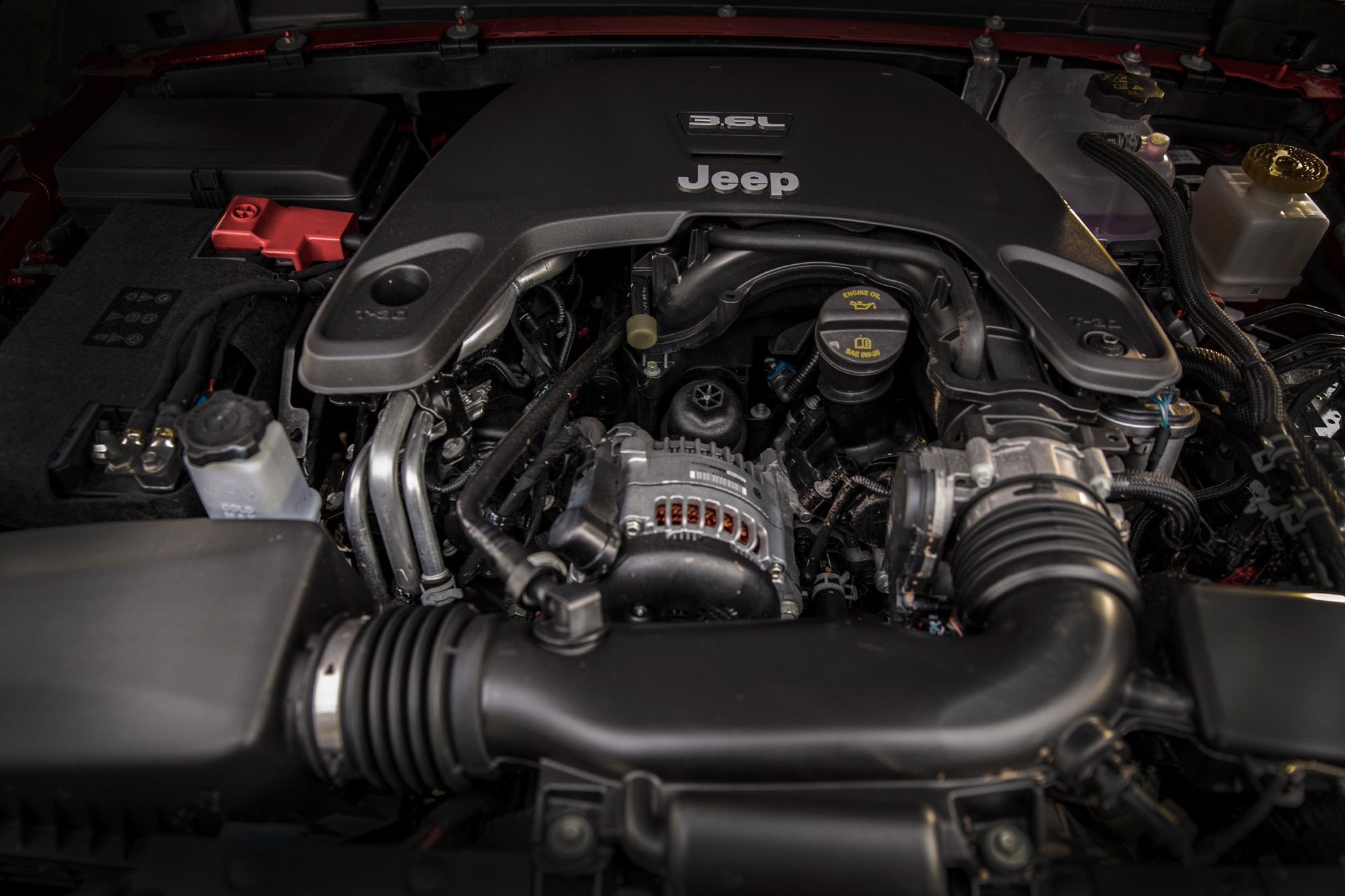What Is a Pentastar Engine?
This ubiquitous V6 has played an important role for Stellantis.
 Stellantis
Stellantis
Car manufacturer Stellantis is perhaps best known for the Hemi V8 engines found under the hoods of vehicles such as the Dodge Challenger and Dodge Charger muscle cars. There's a less mighty but just as important member of the Stellantis engine family, however, that continues to go strong even as many of these retro-styled machines find their eight-cylinder options retired: the Pentastar V6.
 Stellantis
Stellantis
History of the Pentastar Engine
The Pentastar engine arrived for the 2011 model year as part of an across-the-board modernization effort for sedans, SUVs, and pickup trucks at Chrysler. (Chrysler became a part of Stellantis in 2021.) This lone V6 motor replaced a whopping seven other six-cylinder motors in the portfolio across the Jeep, Chrysler, Dodge, and (eventually) Ram brands.
The name Pentastar is itself taken from Chrysler's history, referring to the five-pointed star logo employed by the company since the early 1960s. Although the logo was familiar to most fans of the brand, it had not been used as a badge on any vehicle since the year 2000.
The most common version of the Pentastar displaced 3.6 liters and was found in vehicles such as the Jeep Grand Cherokee, Wrangler, and Gladiator, the Dodge Challenger, Charger, Durango, Grand Caravan, and Journey, as well as the Chrysler 200, 300, Pacifica, Voyager, and Town & Country, and the Ram 1500 pickup and Promaster van. A smaller, 3.2-liter version was also offered in the Jeep Cherokee.
Today, the Pentastar remains available in the Pacifica, Voyager, Ram 1500, Promaster, Durango, Wrangler, and Gladiator.
 Stellantis
Stellantis
Features of the Pentastar Engine
The Pentastar V6 engine was much more advanced than many of the motors it replaced. It brought with it technologies such as dual-overhead camshafts, multiport fuel injection, variable valve timing, and an aluminum block, each of which made the engine lighter and more efficient than past models without sacrificing power.
The Pentastar is also notable for being available with a range of different power outputs, ranging from 283 to 305 horsepower, depending on its application. Later versions of the V6 incorporated the eTorque 48-volt hybrid system, which uses a small electric motor to offer an extra 90 pound-feet of torque to help with acceleration from a stop while also smoothing out the functioning of its automatic stop-start system.
The Pentastar is additionally offered in a fully electrified edition as part of the plug-in hybrid drivetrain available with the Chrysler Pacifica Hybrid.
 Stellantis
Stellantis
The Future of the Pentastar Engine
Stellantis is in the middle of another drivetrain transition, similar in scope to the one that occurred when the Pentastar was initially introduced. This time the move is toward turbocharging and electrification, which has resulted in long-running engines such as the 5.7-liter Hemi V8 being removed from production.
Despite this overhaul, the Pentastar has stuck around. Not only does it continue to be available in several vehicles, but its role in the Stellantis electrification program is planned to expand with the upcoming 2025 Ram 1500 Ramcharger pickup, a plug-in hybrid vehicle that makes use of the Pentastar 3.6-liter V6 motor.
Written by humans.
Edited by humans.
Related articles
View more related articles
